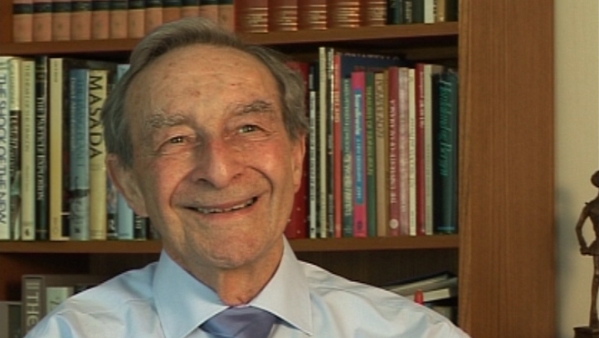NEXT STORY

Expansion of the Department of Chemistry at Nottingham University
RELATED STORIES

NEXT STORY

Expansion of the Department of Chemistry at Nottingham University
RELATED STORIES


|
Views | Duration | |
|---|---|---|---|
| 101. My graduate students: Peter Perkins and Ian Worrell | 87 | 02:18 | |
| 102. Expansion of the Department of Chemistry at Nottingham University | 73 | 03:44 | |
| 103. My role in IUPAC | 46 | 02:22 | |
| 104. Establishing atomic weights | 50 | 03:35 | |
| 105. Forming a team at IUPAC | 39 | 01:22 | |
| 106. How isotopes affect atomic weight | 51 | 01:27 | |
| 107. Geochemistry determining atomic weight | 45 | 02:14 | |
| 108. How radioactivity affects atomic weight | 46 | 04:36 | |
| 109. The Oklo Phenomenon | 96 | 05:28 | |
| 110. The Oklo sake vase made for me | 54 | 01:10 |


And then in the next year I got two further graduate students – Ian Worrall and Peter Perkins – both great chaps, both good chemists. With Ian Worrall, I got on to the lower valence gallium compounds, which I don't want to expand, but we used Raman spectroscopy, courtesy of Len Woodward in Oxford for some of that work, and we were doing the conductivity experiments as well. With Pete Perkins I started something new. I thought if we want to understand the properties of these coordination compounds that we've been talking about, we need to know something about their thermochemistry.
As I explained earlier, you can make and break one bond – what happens to the energy of formation when you add a donor to an accepter and form a coordination compound? Now there's some tricky theoretical work that one has to do and I'm going to skip over that at the moment, but the principle thing is, I said to Pete, what we need to do is to design a calorimeter where we can study the heat of formation of coordination compounds. And we can then get some idea of the strength of donor-accepter bonds and the energetics of the process. And as these were, of course, fairly reactive compounds, obviously the reaction calorimeter that we made had to have particular properties. I don't want to go into the details of the construction, but it was a very neat piece of work that Peter Perkins did. He carried on in this work when he was at Sheffield and, in fact, he joined me later in Newcastle, but then was turning more and more to theoretical work. And when he went to a chair in Glasgow to Strathclyde, he, in fact, was by that stage, completely theoretical and made some important contributions there.
Norman Greenwood (1925-2012) was born in Australia and graduated from Melbourne University before going to Cambridge. His wide-ranging research in inorganic and structural chemistry made major advances in the chemistry of boron hydrides and other main-group element compounds. He also pioneered the application of Mössbauer spectroscopy to problems in chemistry. He was a prolific writer and inspirational lecturer on chemical and educational themes, and held numerous visiting professorships throughout the world.
Title: My graduate students: Peter Perkins and Ian Worrell
Listeners: Brian Johnson
Professor Brian FG Johnson FRS, FRSE, FRS Chem, FAcad Eu, FAS. Professor of Inorganic Chemistry University of Edinburgh 1991-1995, Professor of Inorganic Chemistry University of Cambridge 1995-2005, Master Fitzwilliam College Cambridge 1999-2005. Research interests include studies of transition metal carbonyls, organometallic chemistry, nano- particles and homogeneous catalysis. Professor Johnson is the author of over 1000 research articles and papers.
Tags: Oxford Univeristy, Sheffield University, Newcastle, University of Strathclyde, Glasgow, Peter Perkins, Ian Worrell, Len Woodward
Duration: 2 minutes, 18 seconds
Date story recorded: May 2011
Date story went live: 25 November 2011